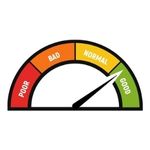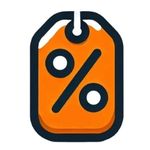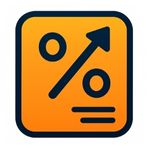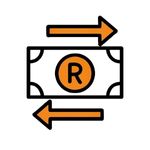
July 2025 presents a unique window for South African consumers to consider taking out credit. With interest rates showing signs of softening, inflation slowing, and banks offering competitive lending terms to stimulate borrowing, many South Africans are weighing up whether now is a good time to secure extra funds. If you are thinking about consolidating debts, covering big expenses, improving your credit profile, or simply making the most of current loan specials, this period offers several strong reasons to consider borrowing.
Key Takeaways
- Lower Interest Rates Present Borrowing Opportunities: With the repo rate at 7.25% and further cuts expected, July 2025 offers favourable conditions for South Africans to secure loans with reduced repayment costs.
- Various Loan Types Are Available To Suit Different Needs: South Africans can choose from personal loans, home loans, vehicle finance, business loans and more, with banks currently offering competitive terms and promotions.
- Responsible Borrowing Remains Essential: Consumers should only borrow what they can repay, compare loan offers carefully, understand total costs, and maintain a strong credit record when taking on new debt.
Understanding Loans in South Africa
A loan refers to a specific amount of money that an individual or business borrows from a bank or other lender. This amount must be repaid over a set period, with an added cost known as interest. The principal is the original sum borrowed. The interest represents the cost of using the loaned funds and is generally quoted as an annual percentage rate (APR). This repayment structure ensures that both the lender and borrower understand the costs involved.
Types Of Loans Available In South Africa
- Personal Loans: These are unsecured loans that can be used for a variety of personal expenses.
- Home Loans (Mortgages): Loans provided to purchase residential property or to refinance an existing bond.
- Vehicle Loans: Loans specifically designed to finance the purchase of a car, motorcycle, or other motor vehicle.
- Business Loans: Loans intended to support business operations, fund growth, or cover short-term financial needs.
- Student Loans: Loans aimed at helping students pay for tuition and other education-related costs.
- Payday Loans: Short-term loans that carry high interest rates and are usually intended to cover urgent financial needs until the next payday.
- Secured Loans: Loans that require the borrower to offer an asset, such as property or a vehicle, as collateral.
- Unsecured Loans: Loans that do not require any collateral from the borrower.
About Arcadia Finance
Secure your loan easily with Arcadia Finance. Choose from 19 trusted lenders, all registered with South Africa’s National Credit Regulator. Enjoy no application fees and a fast, reliable process designed to meet your financial goals.
Interest Rate Trends Heading Into July 2025
As July 2025 begins, South African borrowers are paying close attention to the latest interest rate trends. Over the past two years, the South African Reserve Bank (SARB) has steadily raised the repo rate in response to high inflation. However, recent monetary policy decisions are showing early signs of a possible change in direction. Inflation has started to ease, and there are growing expectations among market analysts that the SARB may soon lower rates or at least keep them steady in the months ahead. For anyone thinking about taking out a loan this July, it is worth understanding how these rate movements affect borrowing costs.
Key Factors Influencing Current Rates
- Repo rate cut by the South African Reserve Bank (SARB): In late May 2025, the SARB reduced the repo rate to 7.25%, marking the third 25 basis‑point reduction since September 2024, as inflation remained subdued
- Declining inflation: Inflation hovered around 2.8–3.2%, below the SARB’s target range of 3–6%, creating fiscal room for further rate cuts .
- Global risks and exchange rate movements: Recent geopolitical tensions, such as the Israel–Iran conflict, have pushed oil prices higher and weakened the rand. SARB policymakers noted these uncertainties could restrict or delay further rate reductions.
- Predictions of more cuts: Economists expect further repo‑rate reductions during the remainder of 2025, with forecasts targeting around 7.00% by year‑end and prime lending rates dropping to 10.50%.
Implications for Borrowers
As South Africans consider borrowing in July 2025, these trends present both opportunities and caution signals. With the repo rate at 7.25% and forecasts pointing to additional cuts, borrowing costs, especially fixed‑rate loans, are becoming more attractive. Securing a home loan or personal finance at current rates can lock in favourable terms before potential declines, reducing the long‑term cost. Banks are responding with aggressive lending packages, meaning more competitive rates may be available.
However, lingering global volatility and rand depreciation place a ceiling on how far and how fast rates can drop. Variable‑rate products remain sensitive to changes in the repo rate and the rand’s stability. If international pressures intensify, causing inflation to rebound, lenders could react by increasing margins or delaying rate cuts. Borrowers should factor in possible shifts in global markets when locking in deals, especially on variable‑rate loans.
The Impact on South African Consumers
Consumers are seeing direct benefits. With the repo rate now at 7.25%, the prime lending rate dropped from 11.00% to 10.75%, reducing monthly home-loan repayments. On a R1 000 000 bond, this saves about R170 per month. Reductions also affect car finance and personal loans, freeing up disposable income and making debt consolidation more manageable.
Still, prudence is key. Shoppers and borrowers should avoid increasing spending plans simply because repayments are lower. Instead, any savings should go toward building an emergency fund or speeding up debt repayment, boosting long-term financial health.
How South African Businesses Are Affected
Borrowing Costs and Cash Flow
SMEs and larger companies benefit from lower financing costs on overdrafts and equipment loans. Even modest savings can be reinvested into stock, staff or expansion, supporting stability amid tight economic conditions . Bigger firms may take the chance to refinance existing debt and improve cash flow.
Consumer Demand and Market Conditions
Lower loan repayments can boost household spending, encouraging growth in retail, services and manufacturing. This uptick can help businesses scale, negotiate better supplier terms and improve profitability.
Currency and Export Pressures
Rate cuts can weaken the rand. While this helps exporters by increasing foreign earnings in rand terms, businesses reliant on imported inputs must manage rising costs. Effective forex planning and hedging remain essential.

Why Borrow in July 2025?

Securing Low Interest Rates Now
South Africa’s repo rate is currently at 7.25%, with the prime lending rate at 10.75%, following the May 2025 cut by the SARB. Economists expect further reductions later this year, potentially bringing the repo rate down to 7.00% and prime to 10.50%. Borrowing now allows you to lock in relatively low fixed or variable loan rates while they are still favourable.

Homeowners Gain from Rate Relief
Home loans remain the top choice for South African borrowers. Even a 25 basis-point drop can save substantial money. For example, a R1 000 000 bond over 20 years now costs about R170 less per month. Borrowing in July means making the most of this saving across the life of your bond.

Making Car and Personal Loans Cheaper
Along with bond rates, lowered repo and prime rates reduce costs for vehicle finance and personal loans. Monthly repayments ease, giving households more space to repay debt, rebuild savings, or combine loans into a single, lower repayment plan.

Giving Credit Scores a Boost
Borrowing responsibly can help build a positive credit history. Managing smaller personal or credit-line loans and repaying on time shows reliability to credit bureaus. That can lead to better terms on future borrowing, such as lower interest or higher credit limits.

Taking Advantage of Promotional Offers
In response to rate cuts, South African banks are offering promotions like waived fees, lower repayment plans, or flexible loan terms. July may have similar, time-limited incentives designed to encourage lending while competition is high.

Supporting SME Borrowing or Expansion
For small and medium-sized businesses, reduced interest rates lower the cost of working-capital loans, overdrafts, and equipment financing . This improved affordability allows reinvestment into stock, staffing or expansion initiatives without adding excessive cost pressure.

Positioning for Stronger Consumer Demand
Slashed borrowing costs often increase household spending. Businesses looking to expand or invest in July can ride this wave, integrating new hires, inventory or marketing campaigns timed to when consumers feel more confident.

Protecting Against Future Rate Rises
Borrowing on a fixed-rate loan in July can safeguard against later interest-rate rises or market volatility. With fixed rates currently low, entering a loan now provides payment stability even if rates increase later.

Leveraging Exchange-Rate Shifts
Although rate cuts can weaken the rand, this has mixed outcomes. Exporters may benefit as rand-earnings increase in rand terms. Businesses that import supplies should carefully plan and hedge against potential cost increases. July borrowing offers time to set up forex strategies and negotiate supplier contracts ahead.
How To Borrow Responsibly In South Africa
Be Clear On How Much You Are Borrowing
- Assess your financial position: Review your income, expenses, savings, and existing debts in detail. Make sure you understand how much you can realistically afford to repay. It is helpful to start building an emergency fund by setting aside a portion of your income each month. This can reduce the need to take on extra debt from formal lenders when unexpected costs arise.
- Only borrow within your means: It can be tempting to accept the full loan amount offered, but you should only take what you need and can manage. Review your monthly budget to check that the repayments will not stretch your finances too far.
- Plan for repayments: Before agreeing to a loan, work out a clear repayment plan. Your budget should account for loan instalments, giving them priority so that you do not fall behind. If you experience trouble repaying, contact your lender as soon as possible to discuss your options.
Understand Where You Are Borrowing From
- Compare different loan offers: Do not rush into the first loan you find. Spend time comparing interest rates, fees, repayment terms and other conditions from several lenders. Choose a loan with terms that fit your budget and financial needs.
- Check the total borrowing cost: Do not focus only on the interest rate. Always calculate the full cost of the loan, including any fees and charges. This will give you a better idea of whether the loan is truly affordable.
- Read the full agreement: Before signing, review the loan terms carefully. Look out for interest rates, the repayment schedule, any fees, penalties for missed payments, and other important clauses.
Maintain A Healthy Credit Record
Your credit score affects both the terms and interest rates you will be offered. To keep your credit in good shape, pay bills on time, manage credit cards carefully, and avoid letting debts grow too large.
Seek Advice If Needed
If you are unsure which borrowing option is right for you, or if you are concerned about taking on more debt, you can consult a registered financial advisor or credit counsellor. They can guide you through your options and help you make choices that suit your financial situation.
Conclusion
July 2025 is shaping up to be a favourable time for South Africans to consider borrowing. With lower interest rates, a wide range of loan options and attractive promotions from lenders, there are several practical reasons to take out credit now. Whether for personal needs, property finance or business expansion, borrowing can provide useful financial flexibility. However, borrowers should proceed with care, comparing offers, understanding full costs, and ensuring repayments are manageable within their budgets. Responsible borrowing will help South Africans make the most of current opportunities while protecting their long-term financial health.
Frequently Asked Questions
Yes, lower interest rates and lender promotions make this a good time to consider borrowing, especially if you need to consolidate debt, finance large purchases or invest in business growth.
South Africans can choose from personal loans, home loans, car finance, business loans, payday loans, student loans, and secured or unsecured loans, depending on their needs.
Many economists expect further rate cuts in late 2025, but external risks could affect this. Borrowers taking out fixed-rate loans now can benefit from current favourable terms.
Only borrow what you need and can comfortably afford to repay. Review your budget and ensure loan instalments will not strain your monthly finances.
Review the interest rate, repayment terms, all fees and charges, penalties for late payments, and any other key conditions in the loan contract before agreeing.







